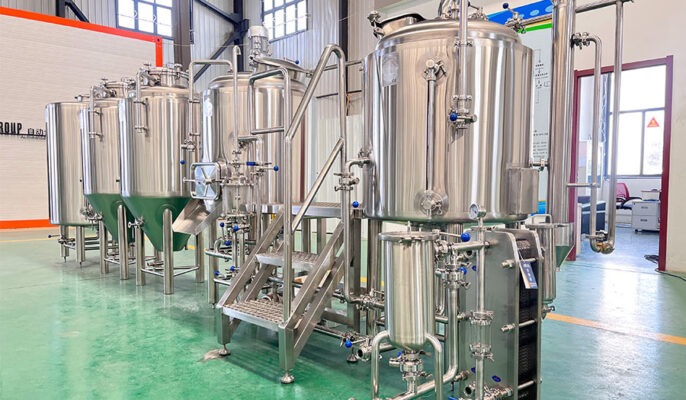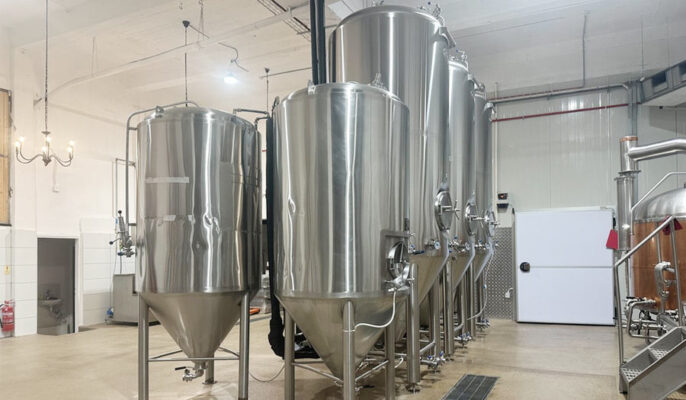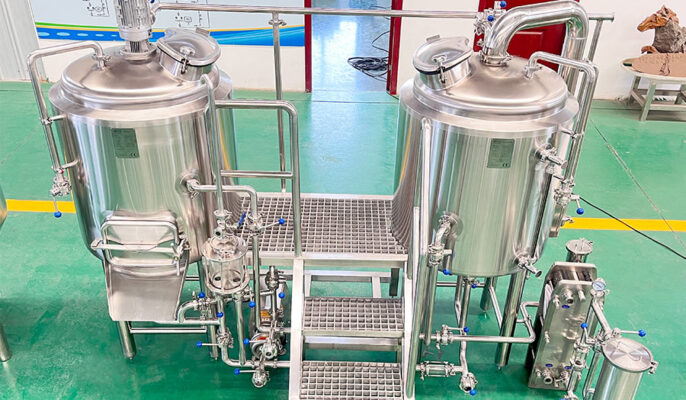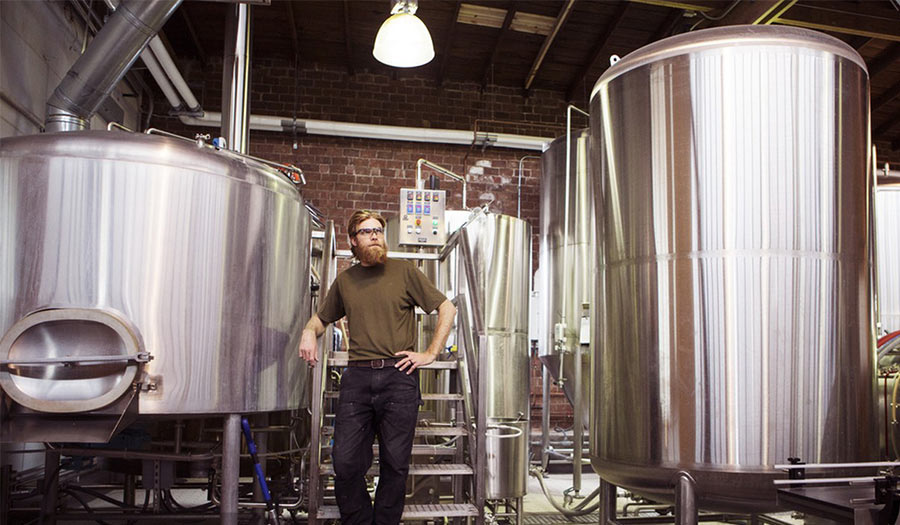In recent years, with the rise of craft beer, microbreweries have also increased. Unlike large commercial breweries, microbreweries use specialized equipment to produce beer in small batches, allowing for greater creativity, flexibility, and quality control. If you are interested in beer and are eager to create your beer brand, setting up a microbrewery may be your ideal choice. This article will detail how to set up a microbrewery, including market research, site selection, equipment procurement, brewing technology, brand building, etc.
Writing a Brewery Business Plan
- Executive Summary: Explain your brewery’s business goals. Include a mission statement and a brief overview of your location, staff, and leadership team.
- Company Profile: Describe details related to your brewery’s philosophy or brand. Include a description of the local market and target customers.
- Market Analysis: Share your market research and how you plan to stand out from nearby breweries. Conduct a separate competitive analysis to survey your competitors and determine how you can offer different and better products, as well as improve the customer experience.
- Organization and Management: Identify your key team members and other people you plan to hire. Include a list of vendors and describe the products they will provide. You will also determine the business entity or legal structure of your brewery in this section. For example, you might choose an entity such as a sole proprietorship, limited liability company, or body corporate.
- Services and Products: In this section, describe your beer and any food products in detail. You may also want to include a sample brewery menu here. Be sure to highlight other products you anticipate selling, such as retail items.
- Marketing and Sales: Discuss your strategy for building your customer base. You can also lay out your pricing plan and how product costs affect your price structure.
- Finance: Develop a financial forecast for the brewery, including a balance sheet, cash flow statement, and profit and loss statement for the first five years of operation. If you plan to seek financing, outline how much money you will need and how you will use it. To be safe, you may need to underestimate revenues and overestimate expenses.
- Appendix: Include any relevant documents or forms not included in the previous sections.

Market research
Target market
Determine your target customer group. Are you targeting local bars, restaurants, and retailers, or selling directly to consumers? Understand the taste preferences, consumption habits, and purchasing power of your target customers to provide a basis for your product positioning. Study the local beer market competition. Understand the types, prices, sales channels, and market share of existing beer brands, and find out market gaps and potential opportunities.
Laws and regulations
Understand the local laws and regulations on beer production and sales. Different regions may have different requirements for brewery establishment, production licenses, hygiene standards, etc. Make sure your microbrewery complies with all relevant laws and regulations to avoid unnecessary legal risks.
Raw material supply
Investigate the local raw material supply. The main raw materials for beer include malt, hops, yeast, and water. Ensure that high-quality raw materials can be obtained stably and at a reasonable price. Consider establishing a cooperative relationship with local agricultural cooperatives or suppliers to ensure the supply and quality of raw materials.
Sales channels
Determine your sales channels. You can choose to cooperate with bars, restaurants, and retailers, or sell through your own online stores or offline stores. Understand the characteristics and requirements of different sales channels and formulate corresponding sales strategies.
Microbrewery site selection
- Geographic location: Choose a location with convenient transportation to facilitate the transportation of raw materials and the distribution of products. It is best to be close to major traffic arteries or logistics centers. Consider local climatic conditions. Beer brewing requires suitable temperature and humidity, and avoid choosing areas that are too hot or humid.
- Site area: Determine the required site area based on your production scale and equipment requirements. Generally speaking, microbreweries need to have enough space to install brewing equipment, store raw materials, and finished beer, and conduct office and packaging work.
- Rent cost: Consider the rental cost of the site. When choosing a site, comprehensively consider factors such as the site’s geographical location, area, and rent to ensure that the rental cost is within your budget.
- Surrounding environment: Choose a location with a good surrounding environment, and avoid being close to pollution sources or areas with high noise. At the same time, consider surrounding supporting facilities such as parking lots, restaurants, hotels, etc. to provide convenience for customers.
Microbrewing equipment procurement
Brewing equipment
- Brewhouse tank: used to convert starch in malt into sugar.
- Boiling pot: boil wort and add hops for flavoring.
- Fermentation tank: used in the fermentation process of beer.
- Cooler: cool the boiled wort to a suitable fermentation temperature.
Filling equipment
- Filling machine: fill the fermented beer into bottles or barrels.
- Labeling machine: label beer bottles or barrels.
Auxiliary equipment
- Water treatment equipment: ensure the quality of brewing water.
- Refrigeration equipment: used to control fermentation temperature and store finished beer.
- Conveying equipment: such as pumps, pipes, etc., used to transport raw materials and beer.
When purchasing micro-brewing equipment, choose products with reliable quality and stable performance. You can learn about the characteristics and prices of different equipment by participating in industry exhibitions, consulting professionals, or communicating with other breweries, and choosing the equipment that suits you best. At the same time, consider the maintenance and maintenance costs of the equipment to ensure that the equipment can operate stably for a long time.

Microbrewery brewing process
During the brewing process, the temperature, time, and sanitary conditions of each link must be strictly controlled to ensure the quality and taste of the beer. At the same time, you can try different brewing processes and recipes according to your own creativity and market demand to create a unique beer brand.
- Malt crushing: crush the malt into appropriate particle sizes to better release starch during mash.
- Mash: mix the crushed malt with water, carry out a mash reaction at a certain temperature, and convert the starch in the malt into sugar.
- Filtration: pass the saccharified wort through the filtration equipment to remove the residue and obtain clear wort.
- Boiling: boil the filtered wort and add hops for flavoring. The type and amount of hops will affect the flavor and bitterness of the beer.
- Cooling: cooling the boiled wort to a suitable fermentation temperature.
- Fermentation: add yeast to the cooled wort for fermentation. During the fermentation process, yeast converts sugar into alcohol and carbon dioxide.
- Maturation: Maturate the fermented beer to make the flavor of the beer more stable and mellow.
- Filling: Fill the matured beer into bottles or barrels for packaging and sale.
Personnel training management
When recruiting personnel, we should pay attention to the professional quality and team spirit of the personnel. At the same time, we should provide employees with the necessary training and development opportunities to improve their business level and work enthusiasm.
- Brewer: Responsible for the brewing process and quality control of beer. Brewers need to have rich experience and professional knowledge in beer brewing and be able to adjust the brewing process and formula according to different raw materials and market demand.
- Sales staff: Responsible for the sales and marketing of beer. Sales staff need to understand the beer market and consumer demand and be able to formulate effective sales strategies, open up sales channels, and increase the market share of products.
- Production workers: Responsible for the production and packaging of beer. Production workers need to have certain operating skills and hygiene awareness and be able to operate according to the production process requirements to ensure the quality and safety of the products.
Brand building
- Brand positioning: Determine the positioning and characteristics of your beer brand. You can start with the flavor, packaging, culture, and other aspects of beer to create a unique brand image. Understand the needs and preferences of target customers, and constantly adjust brand positioning and product strategies based on market feedback.
- Brand name and logo: Choose a concise, memorable, and creative brand name and logo. The brand name and logo should be able to reflect your brand characteristics and values and attract consumers’ attention.
- Packaging design: Design unique beer packaging to improve the recognition and appeal of the product. The packaging design should meet the brand positioning and the aesthetic needs of target customers while paying attention to the quality and environmental protection of the packaging.
- Marketing: Develop an effective marketing strategy to increase brand awareness and product sales. You can promote your beer brand and products by participating in industry exhibitions, holding tasting events, and cooperating with the media. Use social media and online platforms to interact and communicate with consumers, understand consumer needs and feedback, and improve brand reputation and loyalty.

Financial management
Financial management is an important guarantee for the operation of a microbrewery. Here are some suggestions for financial management:
- Budgeting: Make a detailed budget plan, including expenses for equipment procurement, raw material procurement, employee wages, marketing promotion, etc. Strictly control costs to ensure the profitability of the enterprise.
- Fundraising: According to the development needs of the enterprise, choose appropriate fundraising methods, such as own funds, bank loans, equity financing, etc. Ensure that the enterprise has sufficient funds to support production and development.
- Financial statement analysis: Regularly prepare financial statements to analyze the financial status and operating results of the enterprise. Find problems in time and take corresponding measures to adjust and improve.
Conclusion
Establishing a microbrewery requires sufficient market research, selecting a suitable site, purchasing high-quality equipment, mastering advanced brewing technology, etc. Only by making full preparations in all aspects can the smooth operation and long-term development of the microbrewery be ensured. You are also welcome to contact Micet Group. Our engineers will provide advice and brewing equipment support for your microbrewery.




